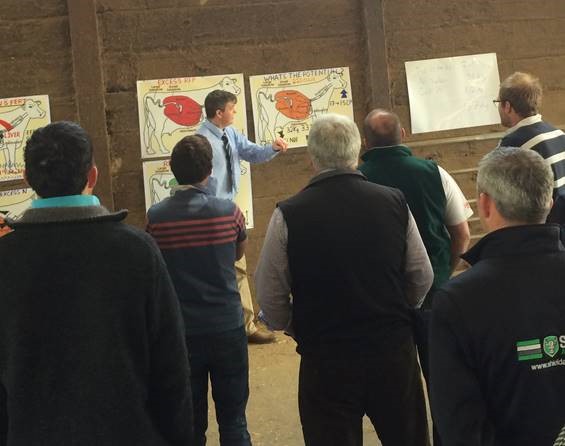With changes to some milk contracts suiting longer periods of grazing, farmers are having to become experts in grassland management, in order to maximise outputs and meet contractual obligations.
“Grass is at the forefront of dairy farmers’ minds, with cows out grazing and the first cut in the clamp for many,” says Nadine Pilkington, Wynnstay Dairy Project Manager.
“Dairy businesses are striving to become more efficient, and with grass the cheapest feed source available, the main focus is on limiting losses in the clamp to ensure that the maximum nutritional value is provided in the form of forage.”
This prompted a selection of Welsh and Midland dairy farmers to attend a series of forage workshops, hosted by Wynnstay, on three separate dairy farms throughout May, and were joined by experts in the field of grass and silage.
Dave Richards, from Ridgend Farm, Worcester, who attended one of the workshops said, “There was a great mix of practical advice and more scientific knowledge, with a large number of take home messages that will allow me to maximise my milk from forage.”
“One of the key messages that everyone took away was the importance of monitoring your clamp throughout the year,” says Nadine.
“Traditionally, farmers sample the clamp when it’s first full, then they may take a few samples throughout the period that it’s in use. But, the new advice now is to take samples on a fortnightly basis.
“As sections of the clamp are removed, it alters the nutritional profile of the forage that’s left. So, to ensure that you have an accurate account of the true nutritional value of the silage that you’re feeding your cows, it’s good practice to sample after every few meters of silage is removed.
“This way, you can work with your nutritionist to alter the ration accordingly, so that the cows are receiving the same nutritional content throughout the year.”
Nadine also explains that it’s advisable to not just sample from the good sections of the clamp.
“Often, the top and corners of the clamp are prone to mould, and so farmers tend to avoid sampling these areas. However, that isn’t providing a true representation of the complete nutritional value of the silage (particularly as many farmers will still feed the ‘not so good’ silage in the TMR), therefore take a selection of samples from across the clamp in an even manner, to provide an accurate analysis.
“Farmers spend a lot of time, effort, and money on ensuring that a quality grass ley is produced, and that it’s cut at the right length at the right time. So, continual monitoring and sampling of the clamp throughout the year will help to ensure that this work doesn’t go to waste.”


